Getting There
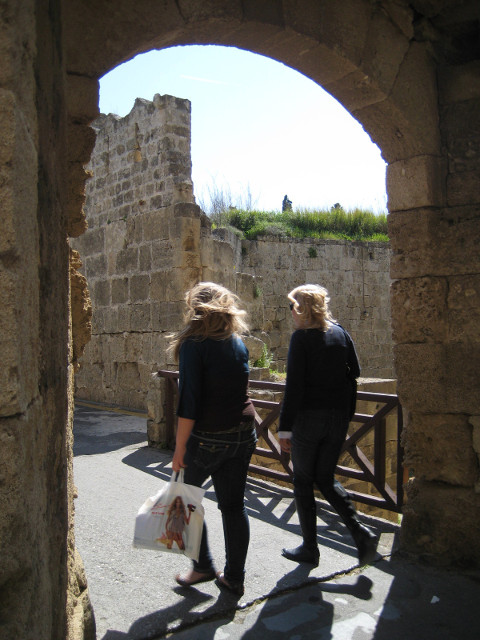
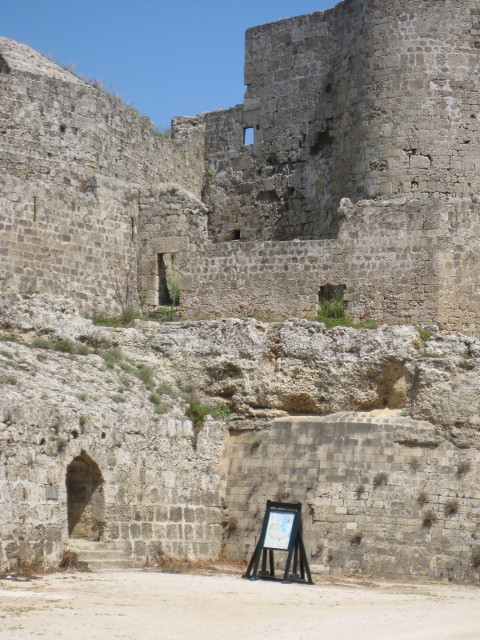
Oh boy! Crocodiles! Moat monsters!
No
such luck. In Rhodes'
time moats were wide and dry. Their job was to prevent seige towers
being pushed up to the city walls, and to make attackers an easy target
for arrows, greek fire, hot oil and the like
The Rhodes Town moat is an archaeological site, and also contains an
outdoor theater, and hundreds of giant stone marbles, of which more
later.
Three bridges carry streets across the moat to the
new town. Three
low-profile passages carry pedestrians through the
walls down
into the
moat. If the passages are just too hard to find,
the moat is also open
at each end, by the waterfront. You pass one entry as you walk into
town from the ferry.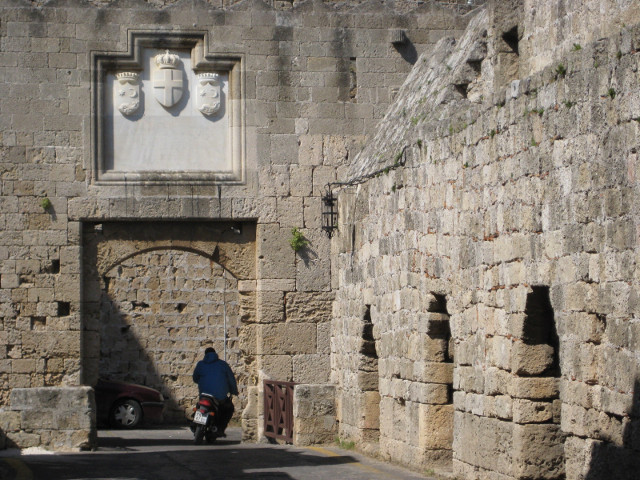
Flora
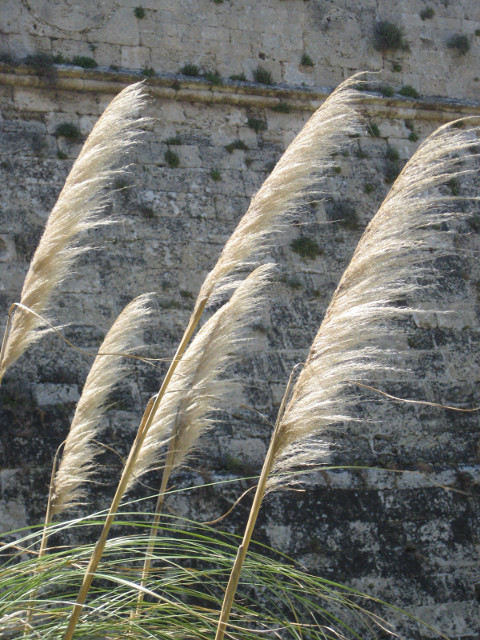
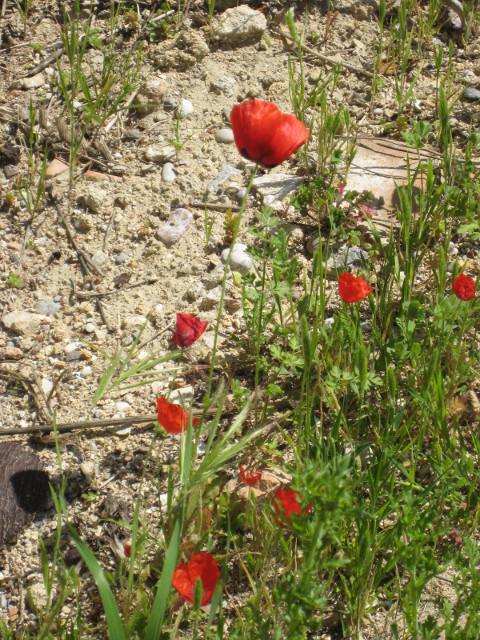
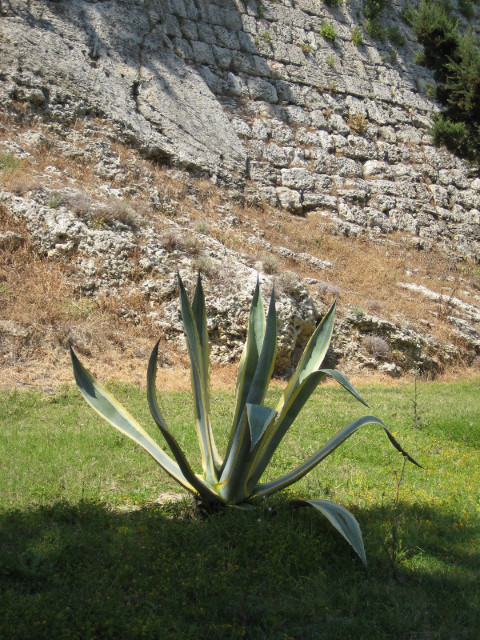
Did I mention the gusty (and gutsy) Spring wind that has been
blowing most of the time I've been here? Even down here in the moat!
Check this pampas grass.
Poppies grow in more fields than Flanders'.
Fifteen thousand people are said to have died in this section of moat
in a single day of the seige of 1522. Mostly young men in the army of
Suleiman, who still had the gall to call himself magnificent after that.
The entire moat is a huge unmarked, cemetary. Once you know, it
adds a certain gravitas to a visit here.
The Matter of the Balls and Vice-Versa

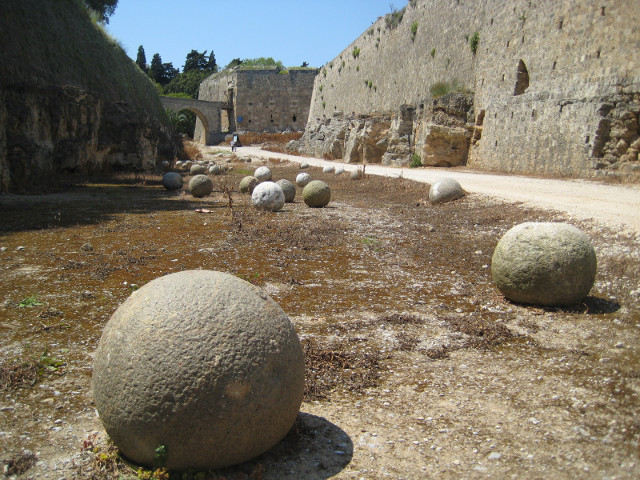
In an earlier post, I
mentioned the giant stone marbles that abound in the moat and
occasional other places around the city.
I have read that Turkish
cannon by 1500 could fire balls 7 feet in circumference,
which would make them about the size of the big marbles.
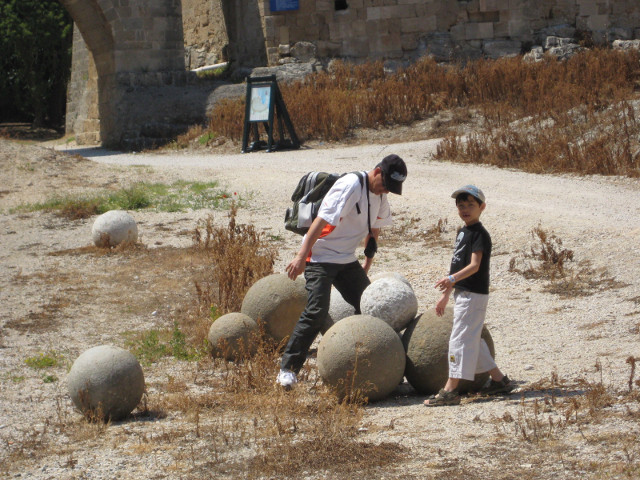

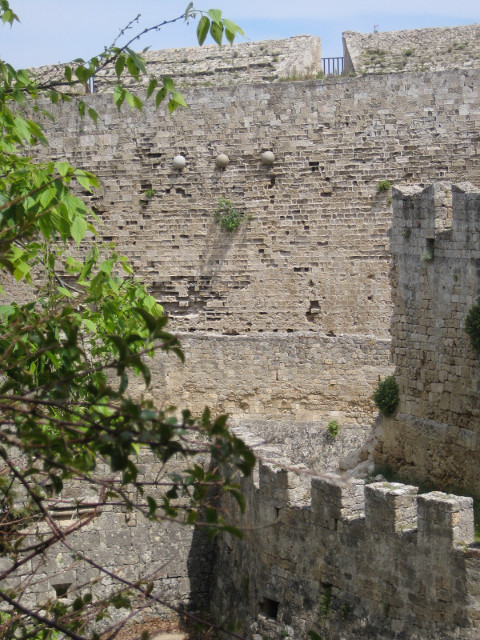
So is that what they are
- cannon balls? I was sure of it when I first
saw one embedded in the outer wall 100+ ft up. Then I found other
places where a set of three is embedded up there, evenly, precisely,
equally-spaced.
So I still don't know the intended nature of these big stone marbles. If cannon balls, why embed them in threes so high up?
If not, then what? (How many cannon do you need to kill
to get that many balls, anyway?)
Later: they appear to be shot for the Bombard Mortar of the Knights of St. John of Rhodes.
The Labyrinth Beneath
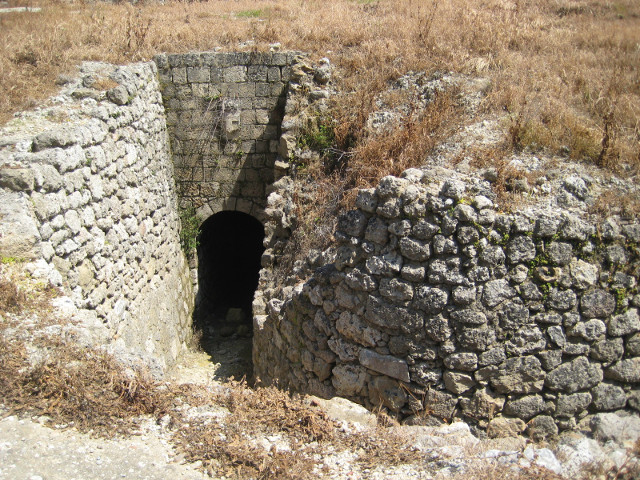
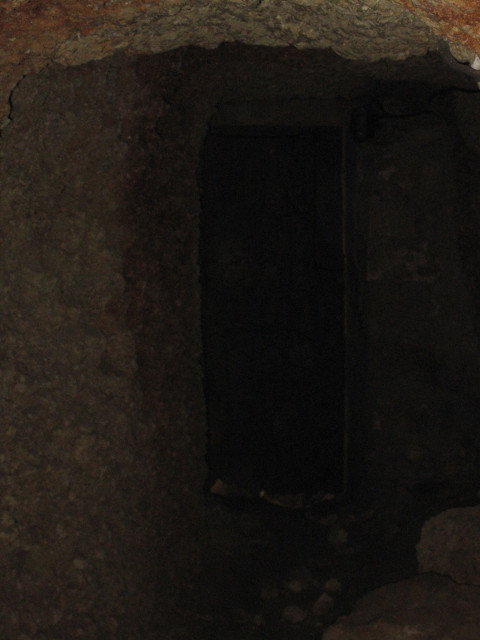
There is an underground network of tunnels beneath the walls and moat.
You cannot buy a map, there is no lighting. Some entrances are locked,
others mere meters away are open, if intimidating. A fellow named
Graeme Jones is slowly mapping the network, using some kind of laser
surveying device. He showed me his maps so far. Says he brings three
lights when he goes in.
I managed to make my way between two entrances, maybe 100' underground
with two
corners. There was enough light (barely) from the entrances to find the
way, but I cheated and used my pocket flashlight. My little camera is
not up to the challenge of getting good pictures in there.
Return
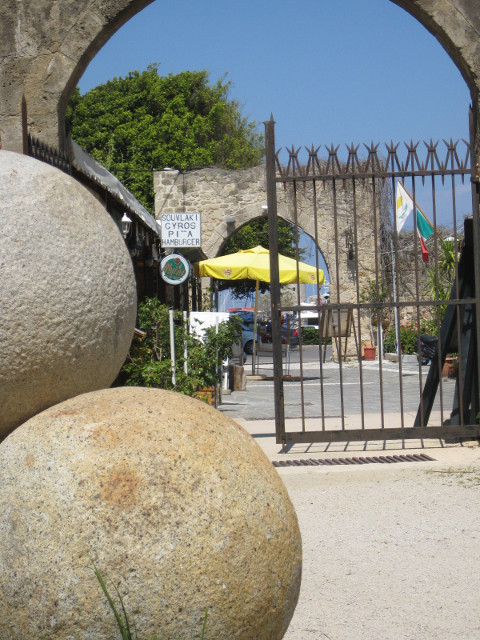
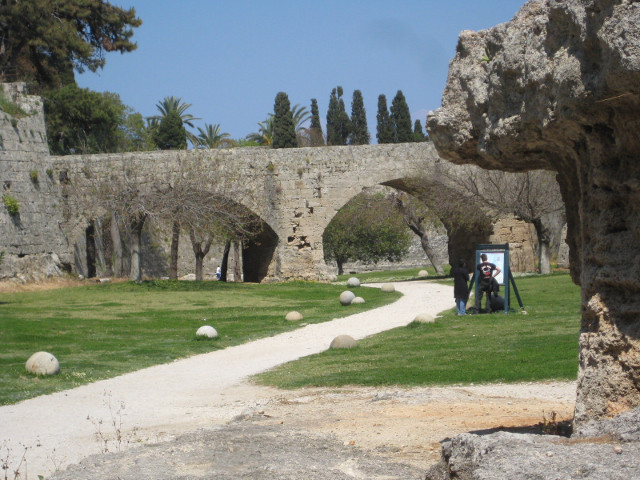
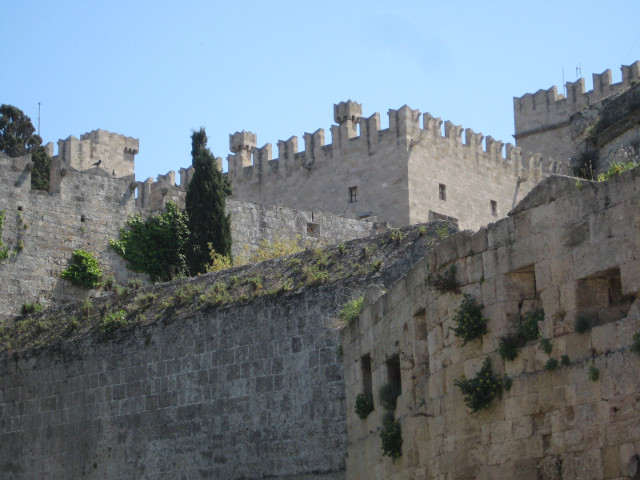
Back to civilization.
Contents Copyright 2012 Jeff Bulf















